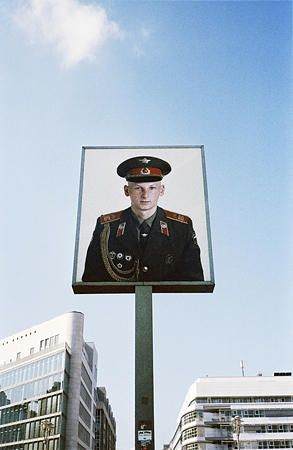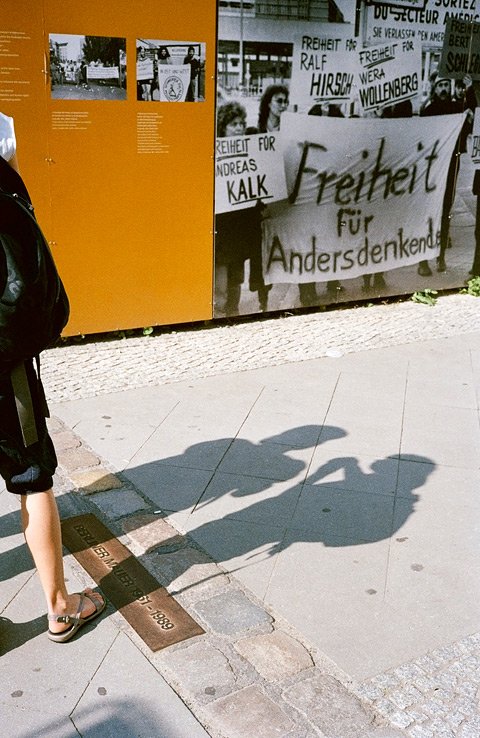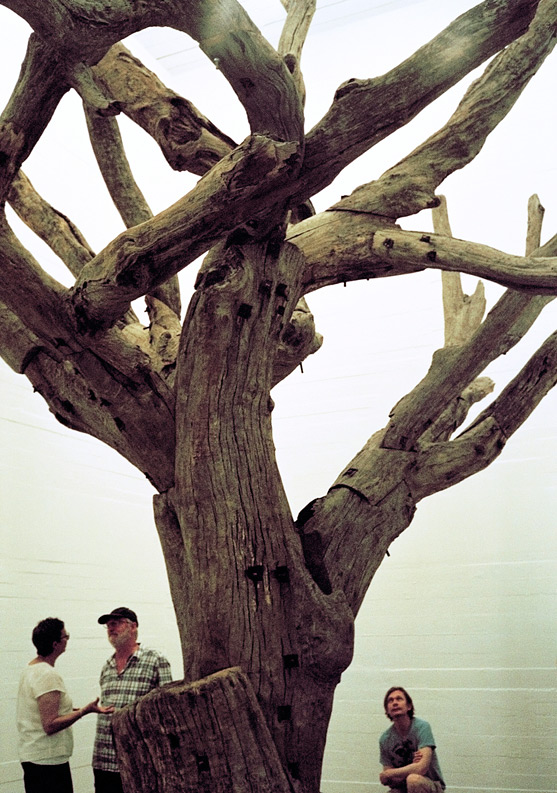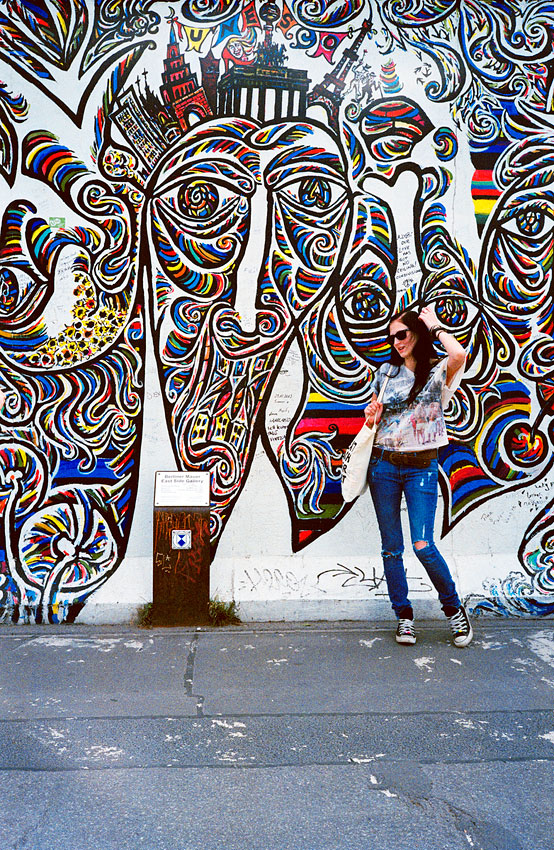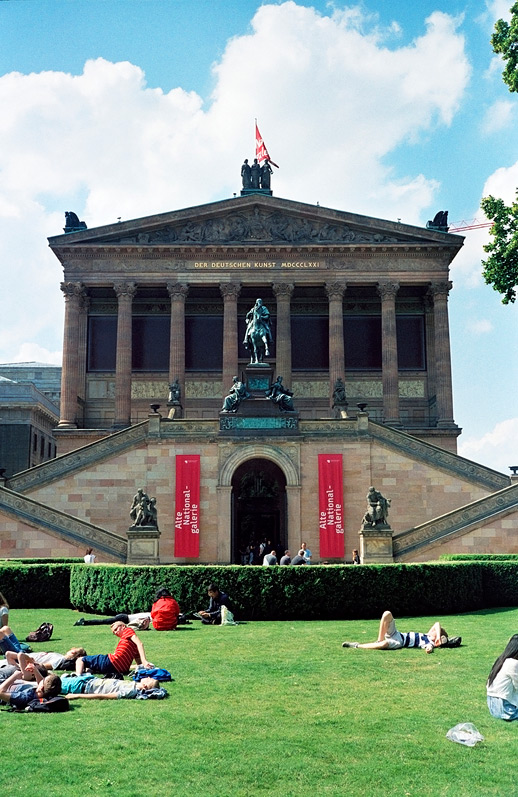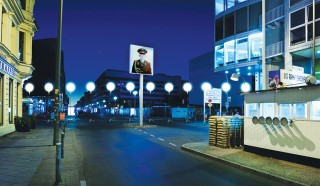One of the most visible changes is in the standard of restaurants. Food has never been Mitte’s—or Berlin’s—strong point. The district’s arty and proletarian spirit kept prices low and the essence of its cuisine firmly rooted to Soviet stodge.
“Mitte is having a food revolution,” confirms Henrik Tidefjärd, a tall, dashing Swede who has lived in Berlin for three decades and who runs Berlinagenten, an agency specializing in bespoke city tours. “The communist shackles of big greasy meals are loosening their grip!”
Tidefjärd and I are having lunch at Pauly Saal, a Weimer-era-inspired restaurant that opened early last year in a former Jewish girls’ school on Auguststrasse, a building it shares with art galleries and a New York–style deli called Mogg & Melzer. The dining room is overseen by two stuffed foxes with bandaged limbs and feathered alpine hats, with a room-wide rocket sculpture mounted just above the kitchen window. The service is crisp, and the food—well-crafted dishes like piglet and black-pudding tortellini with wild garlic and mushroom—is astronomically priced. Tidefjärd, who includes it in his “Gastro-Rallye East” tour, considers Pauly Saal to be the epitome of the new Mitte.
Also on his list is Mani Restaurant, a moody tapas bar on the ground floor of the Hotel Mani. Its menu pays homage to Berlin’s former Jewish population, with simple and affordable sharing plates like velvety roasted beetroot with pomegran-ate; a gorgeous hummus topped with dry-aged beef and garlic chips; and deep-fried calamari topped with quail eggs and a spicy dipping sauce.
A few notches more upmarket is chef Tim Raue’s eponymous restaurant, which opened in late 2010 near the site of Checkpoint Charlie. Raue is greatly influenced by China, and while I have long been dubious of both Asian food in Berlin and “Asian-inspired” food everywhere, our meal at this hushed, elegant spot doesn’t disappoint. There’s dim sum made from guinea fowl and truffle; langoustine teamed with lobster and mango; Raue’s take on Peking duck, presented on an applesauce-filled waffle alongside foie gras and a rich duck soup; and an extraordinary wine list headlined by 40-year-old Austrian rieslings. Authentic? Not particularly. Delectable? Absolutely.
Gazing out raue’s spotless floor-to-ceiling windows, it takes some effort to recall that just around the corner is Checkpoint Charlie, the once infamous border crossing between East and West Berlin. These days, all that’s left is a wooden shack with a stack of burlap sandbags and an American flag drooping from a flagpole. Tourists line up to have their passports stamped with fake East German stamps.
A more moving memorial to the dark days of the Cold War lies a dozen blocks to the east along the banks of the River Spree. Constituting the longest standing section of the Berlin Wall, the East Side Gallery is a 1.3-kilometer stretch of concrete that was painted in 1989 and 1990 with murals by dozens of international artists. Among the best known of the 100-odd images is Dimitrij Vrubel’s depiction of Leonid Brezhnev giving his East German counterpart Erich Honecker a passionate kiss. Near another, less visited section of the Wall is the Topography of Terror museum, which opened in 2010 on the site of the former headquarters of the SS, Gestapo, and Reich Main Security Office. The grim exhibition attempts to understand the crimes against humanity that were committed by Nazi Germany, the propaganda they used, and how dictators wield their power.

